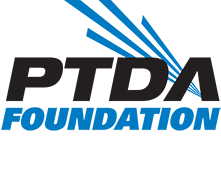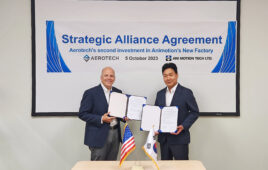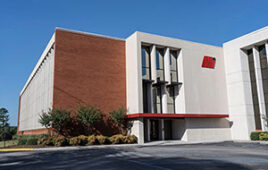 We launched the LEAP Awards last year, as a dynamic competition to honor the most innovative engineered products/components across several of our flagship brands: Design World, Fluid Power World and EE World. Looking at other similar awards programs across the b2b publication space, I had hoped for 30-50 entrants, but I wasn’t really sure … you never quite know what to expect from a brand new program. So I was thrilled when we blew past 100 entries, far exceeding our expectations.
We launched the LEAP Awards last year, as a dynamic competition to honor the most innovative engineered products/components across several of our flagship brands: Design World, Fluid Power World and EE World. Looking at other similar awards programs across the b2b publication space, I had hoped for 30-50 entrants, but I wasn’t really sure … you never quite know what to expect from a brand new program. So I was thrilled when we blew past 100 entries, far exceeding our expectations.
Today, we’ve officially launched the 2019 Leadership in Engineering Achievement Program (LEAP) Awards. Once again, this design engineering product competition will honor the most exciting new products in a host of technology areas; we’ve made a few tweaks to the categories and they are now oriented as such:
Additive Manufacturing
Advanced Materials
Connectivity
Embedded Computing
Fastener Technology
Hydraulics
Industrial Automation
Mechanical
Motion Control
Pneumatics
Power Electronics
Software
Switches & Sensors, and
Test & Measurement.
We’re working to improve the program for this year, with more specific submission information for each category (see below). Once again, we’re keeping the program completely ethical and transparent — no one here at WTWH will be involved in the actual selection of the winners. Instead, our editorial team will again assemble an independent judging panel, comprised of a cross-section of OEM design engineers and academics. This judging team will be solely responsible for the final results.
For this year’s awards competition, products must have been released since January 1, 2018 and be available for commercial purchase in the United States. Deadline for entries is September 1, 2019. Finalists will be announced in the November issue of Design World. Winners will be announced at an awards presentation in conjunction with DeviceTalks West in Santa Clara, California on December 10-11.
For more details, and to submit, visit this link.
CATEGORY DETAILS
Additive manufacturing: This category focuses on machines that build parts — typically with 3D printing layer by layer. Entries can include higher-end desktop varieties of these machines. Submissions can include technologies and machine that employ layer-by-layer builds via extrusion, vat photopolymerization, various forms of laser sintering, various forms of powder-bed, material jetting, and some forms of laminations.
Advanced materials: Enter innovative materials here that improve designs or increase design flexibility for engineers. This category also includes lubricants and additive materials.
Connectivity: In this category, enter interconnect technologies ranging from wire, cable, and connectors. Cables: Industrial motion control cables, fiber optic cables, data, power and networking designs. Connectors: ranging from board-level designs to rugged industrial round, rectangular plug and receptacle types. It also includes cable assemblies, harnesses, and protection devices such as grommets, cable glands, etc.
Embedded computing: This category is for microcontrollers (MCUs) or microprocessors (MPUs) or other custom designed chips, and supporting software in ROM (Read Only Memory) that comprise embedded computing. Also included are development tools and operating systems, computer boards, systems, and components, storage and wired and wireless connectivity, including IoT and IIoT.
Fastener technology: Enter products used specifically to fasten or join parts together in a system. This category includes ultrasonic welding technology, adhesives, fasteners, hinges, springs, sockets, washers, etc.
Hydraulics: This category focuses on hydraulic components and subsystems including but not limited to pumps, motors, cylinders, valves, hose assemblies, sensing technologies, HPUs, accumulators, filtration and sealing technologies.
Industrial automation: This category is for components and services that execute or prompt system-level functions and impart machines with advanced networking and connectivity; power management; safety; transmission and management of system and operation-level information; and other IoT capabilities. For motors, we recommend this automation category if the motor’s leading features are associated with ease of integration (with controls and drives); sophistication in flexibility (in terms of acceptable inputs and outputs); or support of centralized, decentralized, and distributed control.
Mechanical: This category includes bearings, gears, pulleys, clutches, brakes, sprockets, and other power-transmission components. We recommend entering motors in this category if their innovative features are mechanical in nature — pertaining to integrated gearing or sealing; advanced housing geometry or materials; compactness or specialization to enable creative installations; or other design features aimed at boosting efficiency, ruggedness, and serviceability.
Motion control: This category is for components that improve moving machine axes. Enter intelligent electronic components such as controllers, encoders, drives, stepper drives, servo drives, and other components for which electronic control is integral to their operation.
Pneumatics: This category focuses on pneumatic components and subsystems including but not limited to air compressors, cylinders, valves, hose assemblies, sensing technologies, FRLs, vacuum grippers, suction cups, pumps and other lifting devices.
Power electronics: In this category, enter AC-DC, DC-DC power supplies, transistors and any other power electronic circuits, components or assemblies used in power electronics, including battery and battery management.
Software: Submissions here should be for design automation software and not EE focused. Appropriate entries include CAD, CAM, simulation, and additive manufacturing software.
Switches & sensors: Entries in this category should be feedback devices including mechanical switches and photoelectric, proximity, reel, and hall-effect sensors. Submissions can include devices for pressure, speed, temperature, and vibration sensing, vision systems, and edge devices.
Test & measurement: This category is for test and measurement equipment as typically used by design and development engineers engaged in product design and development. Do not enter equipment typically found only on production and assembly lines or that used outside of engineering settings.
Filed Under: Awards • acquisitions, NEWS • PROFILES • EDITORIALS, Drives (stepper) + amplifiers




